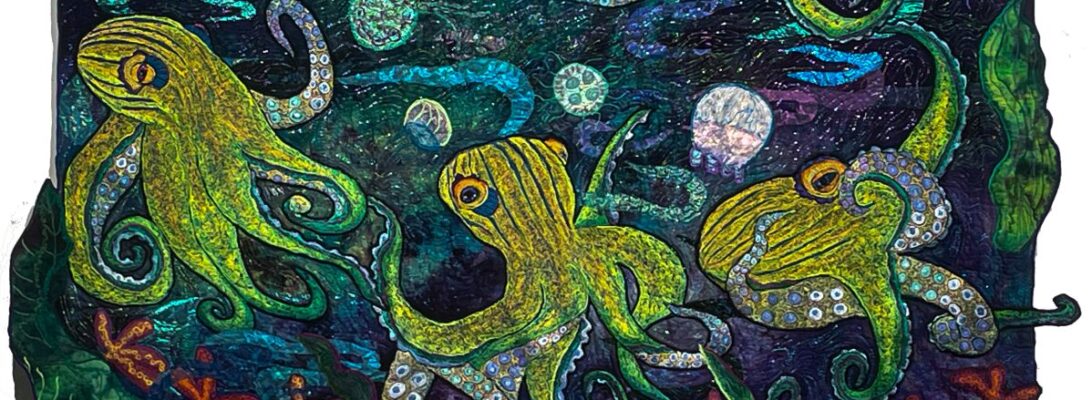
I talk alot about color theory, choosing of threads and creating color schemes. The nature of thread painting is no different than any other art. It’s a creating of colors from components. How you arrange those components changes the effect you get.
I usually line up colors light to dark and add in a shocker and a shader. That color scheme gives us a smooth layer of color that builds on itself. It’s pretty. But it hasn’t got a whole lot of depth.

Sometimes I separate the the scales into a dark and light zone. That creates a deep separation on the scales without any shading. That’s pretty too.

I wanted something different for this fish. I wanted the scales deeply separated and clear. So I underpainted my fish first in blues, purples and greens, and then over painting with yellows and oranges.
Is it extra work? Yep. Would I do it all the time? Probably not.
But one of the wonders of doing Koi is their textures. The textures of fins and scales and their sense of motion is all of that.

So I started underpainting with the complements of the piece. Since the fish is yellow orange, the underpainting should be blue. green and purple.

He’d be pretty if I just continued in that range. Instead, after establishing the darker underpainting, I painted over with yellow and orange threads.



After that, I added a light layer of turquoise metallic thread for flash and black outline for definition.

This is where I think I’m going with this. The underpainting separates and lifts each scale and the outlining nd flash stitching punches it visually.
If you are keeping score of colors on the color wheel, you’ll notice it has a full range of analogous colors from Yellow, green, purple to blue.
Is one method better. Heavens, no! It’s a matter of having choices and knowing what those choises offer you. Now I’m off to stitch rocks and hostas.







































































